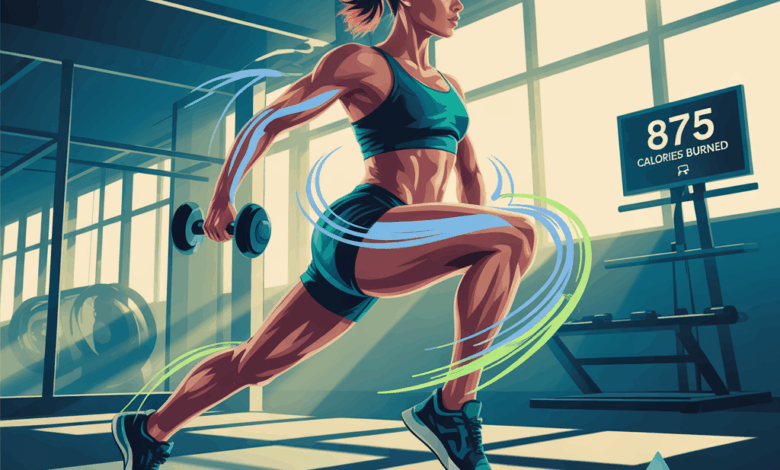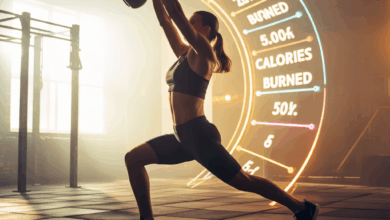How Many Calories Do Leg Lifts Burn? Realistic Estimates & Tips

Ever found yourself doing leg lifts on the living room floor, wondering if those slow lifts and controlled lowers are actually melting belly fat — or just building a stubborn cramp? You’re not alone. Many people ask whether core moves like leg raises are worth the time for calorie burn or if they’re mainly strength-building. Let’s break down the numbers, realistic expectations, and smart ways to make leg lifts work for your goals.
How many calories do leg lifts burn? — realistic estimates
Short answer: it depends. Calorie burn from leg lifts varies with the type of leg raise (lying, hanging, standing), your body weight, intensity, and workout structure. Leg lifts are generally low-to-moderate intensity core exercises — excellent for strengthening the hip flexors and lower abs but not the highest calorie burners by themselves.
How calorie estimates are calculated
Exercise calorie estimates often use METs (Metabolic Equivalent of Task). A typical leg raise might be around 2.5–4.0 METs depending on effort:
- Low-effort lying leg raises: ~2.5 METs
- Moderate-paced leg raises or circuits: ~3.0 METs
- Intense hanging leg raises, weighted or fast reps: ~4.0 METs
Using the formula (MET × 3.5 × body weight in kg ÷ 200) gives calories burned per minute. Example: a 70 kg (155 lb) person doing moderate leg lifts (3.0 METs) burns about 3.7 kcal/min — roughly 37 kcal in 10 minutes. That’s useful, but remember the value is influenced heavily by intensity and rest intervals.
Typical calorie ranges by person and session
These are ballpark figures for continuous leg-raise work (no long rests):
- 10 minutes of steady lying leg raises: 30–50 kcal
- 20–30 minutes of mixed core circuit with leg raises: 70–150 kcal
- 10 minutes of intense hanging leg raises with added weight: 50–80 kcal
Real-world example: Sarah (140 lb) does a 12-minute ab circuit with lying leg raises, planks, and bicycle crunches and burns ~70–90 kcal; Marco (185 lb) doing the same effort burns closer to 90–115 kcal.
Why leg lifts are valuable beyond calories
Although leg lifts aren’t the highest calorie burner, they:
- Build core strength, which improves posture and movement efficiency
- Increase muscle endurance in the hip flexors and lower abdominals
- Support better form in compound lifts (squats, deadlifts) that do burn many more calories
- Reduce injury risk by balancing anterior core strength
Combine strength and calorie goals
To get both strength and higher calorie expenditure, pair leg lifts with compound moves or perform them in circuits. The accumulated effect of higher heart rate, NEAT (non-exercise activity thermogenesis), and increased muscle mass contributes to long-term calorie burn.
Workout variations to increase calorie burn
Swap simple reps for progressions and circuits to up the intensity:
- Hanging leg raises — harder, more muscle recruitment, more calories
- Lying leg raises with tempo (slow down the lowering phase)
- Weighted ankle straps or light dumbbells for added resistance
- Superset leg lifts with bodyweight squats or mountain climbers
- Perform as part of a HIIT core circuit (30s on / 15s rest) to elevate heart rate
Sample 15-minute leg-lift mini-workout
- Warm-up: 2 minutes of marching in place + hip circles
- Round (Repeat 3x): 30s lying leg raises, 30s plank, 30s jump squats, 30s rest
- Finisher: 60s slow hanging leg raises (if available) or flutter kicks
- Cool-down: gentle stretches for hips and hamstrings
This structure mixes core work with explosive moves to increase calorie burn while keeping the focus on leg lifts.
Practical tips to maximize results
- Focus on control rather than quantity — slow negatives recruit more muscle.
- Use progressive overload: increase reps, add weight, or change tempo every 2–4 weeks.
- Combine with regular cardio sessions and compound resistance training for best fat-loss results.
- Prioritize sleep and protein intake to support recovery and muscle maintenance.
- Track overall weekly energy balance — short core sessions are a piece of the puzzle, not the whole plan.
Healthy lifestyle advice that complements leg lifts
Calorie burn from a particular exercise is only one factor. For visible changes and better health, pair your leg lifts with:
- Consistent strength training 2–3x per week to build lean mass
- A sustainable calorie-controlled diet focusing on whole foods — see nutrition guides for meal ideas
- Daily movement (walking, standing breaks) to increase NEAT
- Balanced recovery: quality sleep, hydration, and mobility work
FAQs — Frequently Asked Questions
Leg lifts burn similar calories to many core moves when done in isolation. Exercises that recruit larger muscle groups (burpees, kettlebell swings, squats) burn more calories. Leg lifts are best used for targeted lower ab strength, and combined circuits raise the overall calorie burn.
Spot reduction isn’t supported by science. Daily leg lifts will strengthen the core but won’t specifically remove belly fat. Fat loss requires a consistent calorie deficit, full-body strength work, and cardiovascular training alongside core exercises.
Increase intensity: add weight, shorten rest intervals, perform hanging variations, include plyometrics in your circuit, or combine leg lifts with compound movements. Longer, higher-intensity sessions and progressive overload boost total energy expenditure.
Conclusion — Make leg lifts part of a bigger plan
So, how many calories do leg lifts burn? Alone, leg lifts are a moderate calorie burner — great for building core strength and stability but not a high-calorie torch by themselves. Use leg raises as a strategic part of circuits, combine them with compound exercises, follow smart nutrition, and track progress. When you pair focused core work with full-body training and healthy habits, you’ll get both a stronger midsection and improved calorie burn.
Ready to level up? Try the 15-minute mini-workout above, explore more workout routines, and consult our wellness tips for recovery strategies. Tell us about your favorite leg-lift variation in the comments — or bookmark this page and give the sample session a try this week!





